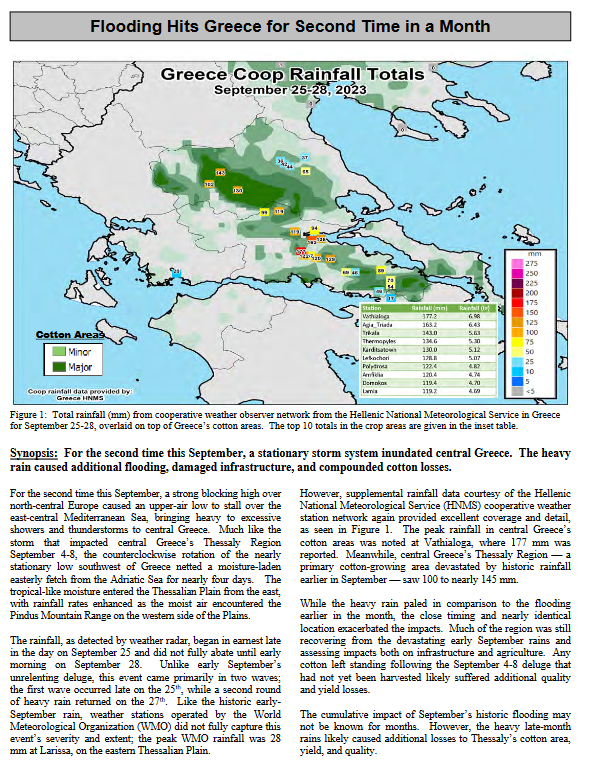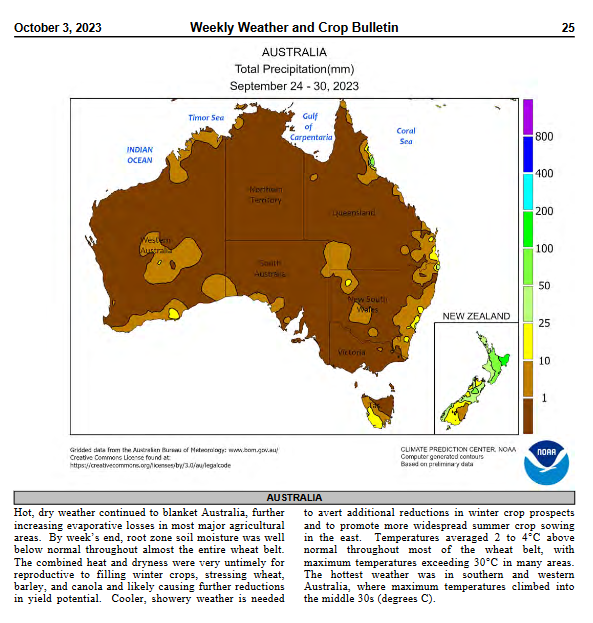This article is based primarily on the October 3, 2023, USDA Crop Bulletin which covers the week ending October 1, 2023. The full USDA Crop Bulletin can be accessed HERE
It again seems like an average crop which is good considering the late and poor start. But we are concerned about the Frost/Freeze warning. Because we published a few days late last week there have only been a small number of days between that article and this one.
This article includes a short international review of agricultural conditions which are generally favorable. I also included U.S. crop-related weather forecasts. And there is a small grains production forecast.
We first take a look at the frost/Freeze warning.
We then take a look at the impact of flooding in Greece. I realize that Greece is not in the U.S. but the USDA thought it important enough to include this in their crop bulletin so I am showing it as it may impact world cotton production.
Now on to the National Agriculture Summary. The Tables below the summary have additional data. The boxes with my comments may be incomplete so for crops of interest check the data out yourself to be sure.
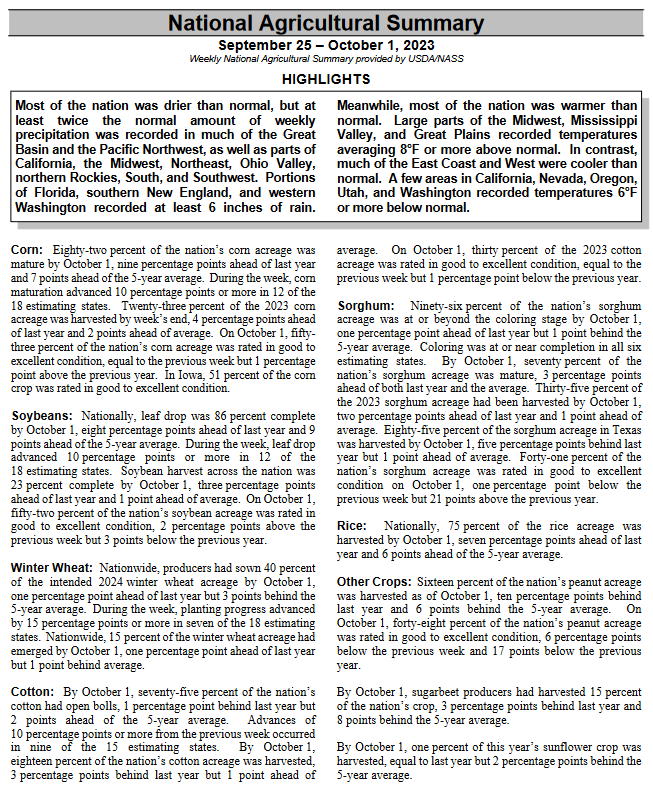
| Below is pretty much the same information in table format. However, there is a lot of additional information in these tables. |
–
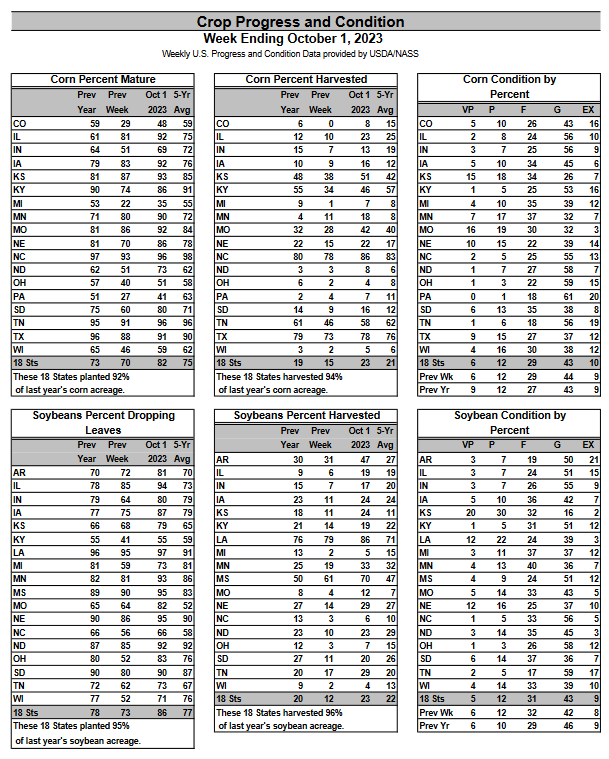
| The condition of corn seems to have recovered from earlier this year to now be even better than last year and the 5-Yr Average which is amazing. Soybeans are performing at their five-year average but previously we learned that the number of acres planted was less than last year. |
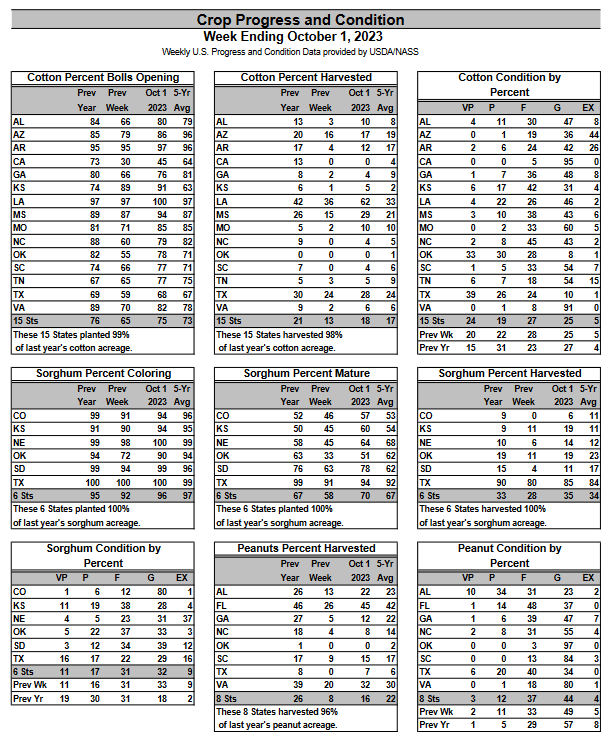
| Cotton is now in line with the five-year average. Sorghum is in line with its 5-Yr average with the crop condition much improved over last year so Sorghum is now exceeding the 5-Yr Average. Peanut conditions continued to lag last year. |
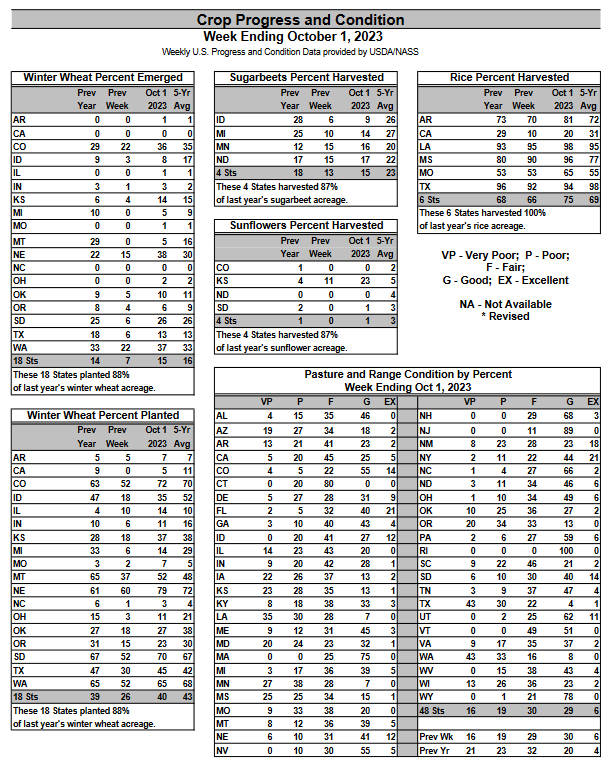
| Rice is looking very good. The harvesting of sugarbeets has just started but is slower than last year and the Frost/Freeze warning is a concern. The planting of winter wheat is even with last year but slower than their 5-Yr average. The pasture conditions are better than last year but not dramatically. |
Some additional detail is provided HEREIt is mostly some additional weeks of data and it is all in larger print. |
Let us take a look at the weather forecasts.
| 6
– 10
|
|
|
| 8
– 14 |
|
|
| 3
– 4 |
|
|
HAZARDS OUTLOOKS
Here is the latest Day 3 -7 and Day 8 – 14 hazards forecasts which are updated only on weekdays. I think it supplements the standard weather forecast.
| You can track the situation daily by accessing our Daily Weather forecast which you can access HERE. But the weather outlook maps in this article also update. Of interest are the areas of reduced precipitation. |
Looking at the month-to-date precipitation

| You can see the wet and dry areas. The first 2 days of October were pretty dry. |
The NASS Report of the Week. We have not provided a report this week but instead provided a production report.
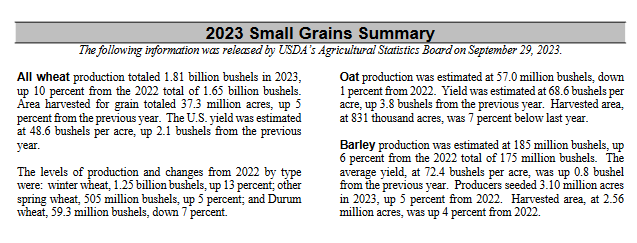
| A production report is different than a progress report as it shows projected production not just progress and the report for wheat, and barley are very good while the report for oats is not as good. |
International
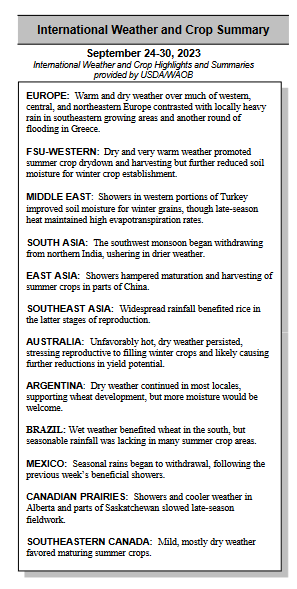
| No map was provided this week. |
| I am showing Australia because they appear to be in some trouble. |
Sources of Information
Weekly Updates can be found HERE
and perhaps more directly HERE
Additional Useful Sources of Information
WASDE: World Agricultural Supply and Demand Estimates HERE
NASS Report Schedule HERE
Executive Briefings HERE
Economics and Prices HERE
Office of the Chief Economist HERE.
Drought information by crop HERE
–
| I hope you found this article interesting and useful. |

